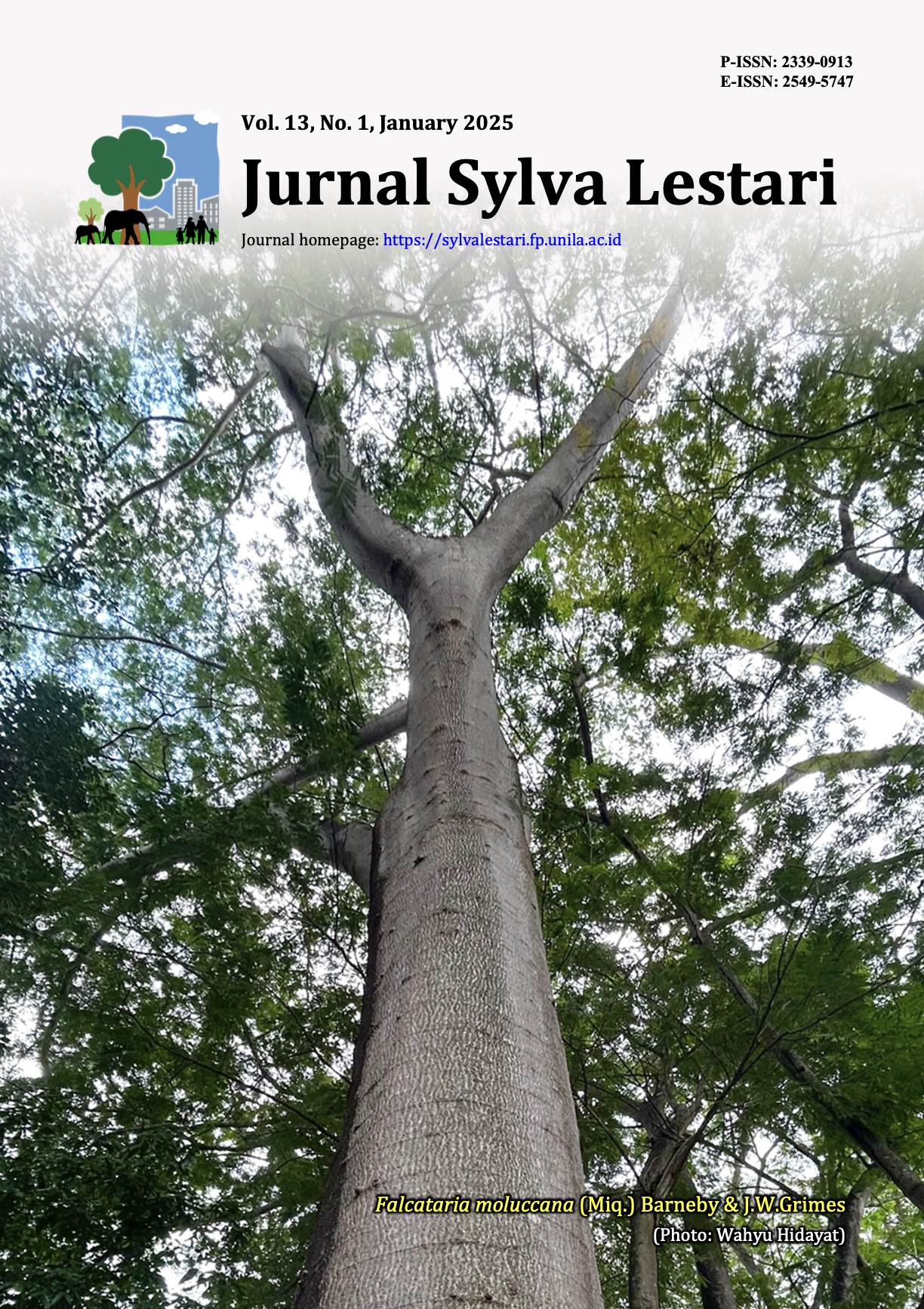Gall Rust Disease Dynamics in Falcataria falcata L. Across Elevations in Agusan del Norte, Philippines
DOI:
https://doi.org/10.23960/jsl.v13i1.1142Abstract
Gall rust disease poses a significant threat to falcata (Falcataria falcata L.), particularly in different elevation ranges. This study aimed to assess the gall rust disease incidence and severity at low (0–200 masl), moderate (201–400 masl), and high (401–600 masl) elevations. Results showed a significant correlation between gall rust disease incidence and severity and elevation based on Spearman rho correlation analysis. Higher elevations were associated with increased gall rust disease incidence and severity. This suggests that environmental conditions specific to these elevations may aggravate gall rust development. Based on the findings, temperature and relative humidity, which vary with elevation, play a role in gall rust disease incidence. Conversely, light intensity significantly influences gall rust disease severity across elevation ranges. These findings signify the importance of elevation-related factors in disease management strategies in falcata plantations. By identifying the relationship between gall rust disease and elevation, this research provides insightful information that can be used to improve disease management strategies and create focused control measures. The results provide an in-depth understanding of gall rust disease dynamics and offer recommendations for reducing its impact.
Keywords: disease incidence, disease severity, elevation, Falcataria falcata L., gall rust
Downloads
Downloads
Published
How to Cite
Issue
Section
Statistics
 Abstract views: 485 times
Abstract views: 485 times PDF downloaded: 309 times
PDF downloaded: 309 times
Metrics
License
Copyright (c) 2025 Rece Ruby Gera Tering, Adrian Monteroso Tulod, Nympha Ellarina Branzuela, Marvin Arroyo Batiancela, Rosalinda Palo Tutor, Jupiter Viovicente Casas, Mark Jun Atchueta Rojo, Dennis Morgia Gilbero

This work is licensed under a Creative Commons Attribution-NonCommercial 4.0 International License.
Authors retain copyright and grant the journal right of first publication with the work simultaneously licensed under a Creative Commons Attribution-NonCommercial 4.0 Licence that allows others to share the work with an acknowledgement of the work's authorship and initial publication in this journal.
Authors are able to enter into separate, additional contractual arrangements for the non-exclusive distribution of the journal's published version of the work (e.g., post it to an institutional repository or publish it in a book), with an acknowledgement of its initial publication in this journal.
Authors are permitted and encouraged to post their work online (e.g., in institutional repositories or on their website) prior to and during the submission process, as it can lead to productive exchanges, as well as earlier and greater citation of published work (See The Effect of Open Access).









